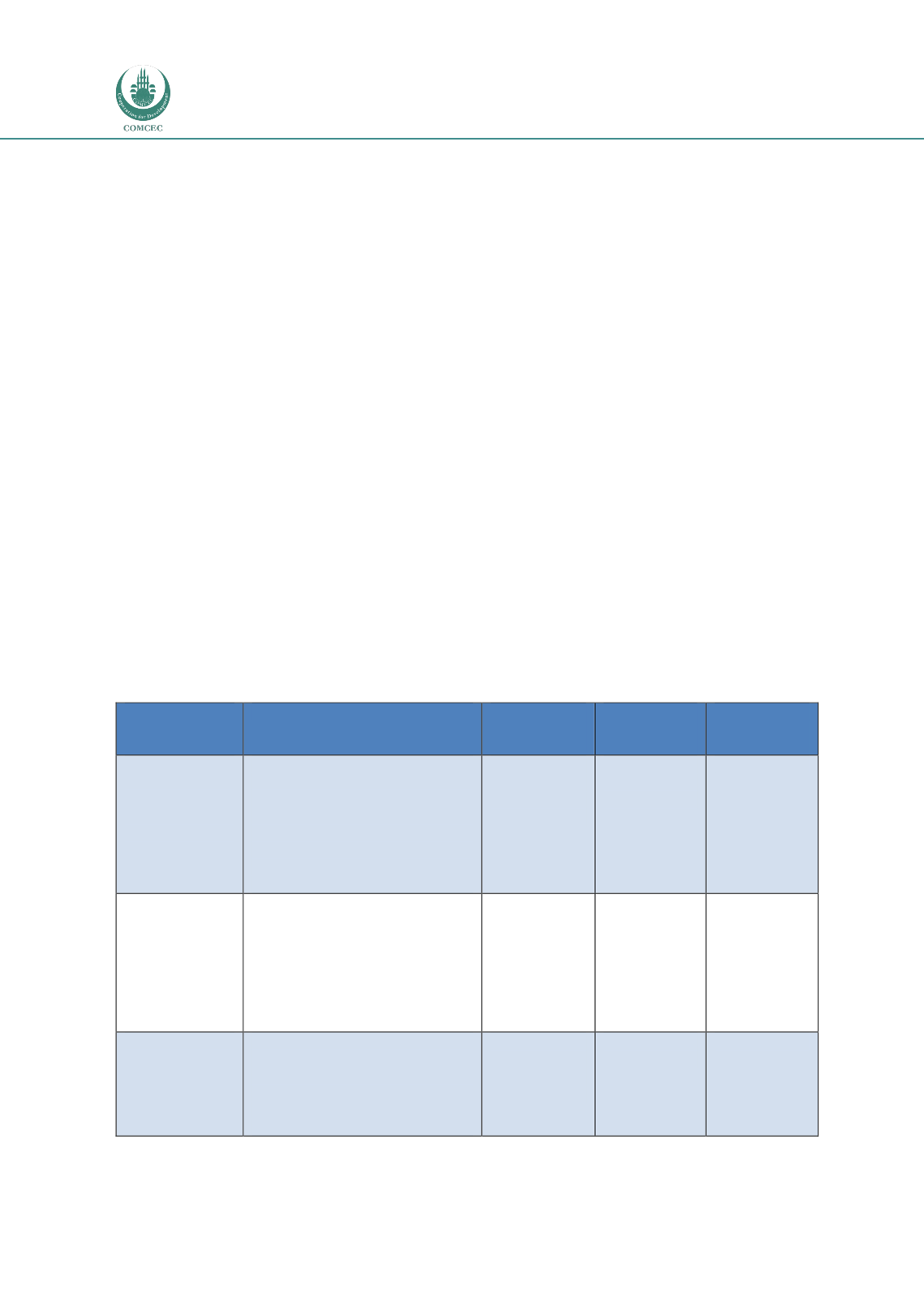

Promoting Agricultural Value Chains:
In the OIC Member Countries
52
Donor support
. Countries rally for donor support to assist in their objective of promoting food
security. Various donor programmes and initiatives are in place, such as the USDA Food for
Progress Program, which is one of the biggest food security programmes and is active in all
African OIC Member Countries. National initiatives aiming towards donor support also exist.
For instance, Niger has recently launched its programme “Nigeriens Nourish Nigeriens” (3N),
which aims to address the country’s dire situation of recurring food crises. The government is
investing 22 percent of the total amount needed for the programme and currently lobbies for
donor support to cover the remaining finances. The 3N initiative encompasses 11 key
programmes that aim to diversify agricultural production, to increase cereal yields, to improve
the availability of high quality seeds and irrigation, and to promote localized production
clusters, so that each region of the country focuses on crops and livestock that are suitable to
its agro-ecological conditions.
Despite the pronounced focus on focus security, most OIC countries are unable to achieve this
and are net importers of food crops, as shown in Chapter 3. Agricultural production suffers
from low productivity and is not able to keep up with population growth. For instance, Nigeria
was self-sufficient in food in the 1960s and exported significant quantities of agricultural
commodities (cocoa, nuts, vegetable oils). Nowadays, Nigeria is a large importer of food and
the world’s biggest rice importer (Schaffnit-Chatterjee, 2014).
For more than two-thirds of OIC countries, food aid also plays an important role. The FAO
(2015) reports that 21 out of the 37 countries worldwide which are in need of external
assistance for food in 2015 are OIC Member Countries. Food insecure countries are grouped
into three broad categories, depending on whether their need for external assistance arises
due to conflict, crop failure or the impact of localised high food prices on vulnerable groups
(se
e Table 4-1).
Table 4-1 Status of food insecurity in OIC Member Countries 2015
FAO Category
Explanation
African OIC
Member
Countries
Arab OIC
Member
Countries
Asian OIC
Member
Countries
1)
Exceptional
shortfall in
aggregate
food
production/
supplies
Countries facing an exceptional
shortfall
in
aggregate
food
production/supplies as a result of
crop failure, natural disasters,
interruption of imports, disruption
of distribution, excessive post-
harvest losses, or other supply
bottlenecks.
The Gambia
Guinea-
Bissau
Senegal
Syrian Arab
Republic
Iraq
2) Widespread
lack of access
Countries with widespread lack of
access, where a majority of the
population is considered to be
unable to procure food from local
markets, due to very low incomes,
exceptionally high food prices, or
the inability to circulate within the
country.
Burkina Faso
Chad
Guinea
Mali
Niger
Sierra Leone
Djibouti
Mauritania
Yemen
3)
Severe
localized food
insecurity
Countries with severe localized
food insecurity due to the influx of
refugees, a concentration of
internally displaced persons, or
areas with combinations of crop
failure and deep poverty.
Cameroon
Cote d’Ivoire
Mozambique
Uganda
Somalia
Sudan
Afghanistan
Source: FAO, 2015

















